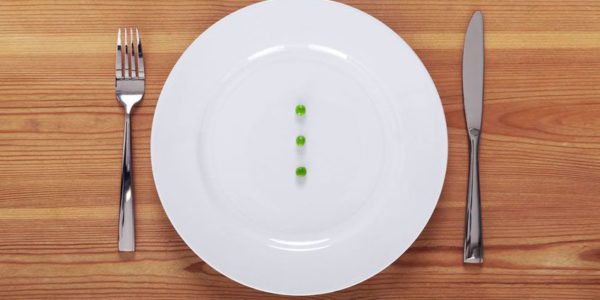Most of clients I see at Tidewater Fitness come in looking to lose weight, become leaner, drop a few clothing sizes, have more energy, and feel better. Nutrition plays a huge role in these goals, obviously.
One of the major services I provide is habit-based nutrition coaching. This has proven to be the most successful way to create a nutritional change.
Now, the majority of my clients are over-eaters. Meaning, they consume more calories than they expend on a daily basis. For folks in this category, a caloric deficit is needed to create weight loss.
However, in my 5 years as a fitness coach, I have come across a handful of clients who want to lose weight but were under-eating their calories. By under-eating, I mean consuming below 1200 calories per day.
It’s easy to assume that a very low-calorie diet would provide enough of a deficit to achieve weight loss, but the opposite is actually true. Under-eating can prevent you from losing weight. Large reductions to your overall calorie count (like dropping from 2,000 calories to 1,000) changes your body’s metabolism. But this isn’t a good change.
One study wanted to test the effect that low-calorie dieting has on chronic stress and cortisol (your body’s stress hormone) production. They had 121 females randomly assigned to 4 dietary groups. Two of these groups were restricted to 1200 calories per day while the other two ate normally for 3 weeks.
The researchers found that not only did stress increase, but cortisol increased in the restricted dietary groups. And that’s the bad news.
If your goal includes weight loss or fat loss, an increase in cortisol is the last thing you want. Cortisol signals your body to store more body fat. It creates a tight hold on excess body weight and body fat. This can make it almost impossible to accomplish your goals.
But that doesn’t mean you can never lose weight. The simple fix is increasing your caloric intake to an appropriate level.
One of the easiest formulas I use to determine this is your bodyweight multiplied by 13-14. This will provide a maintenance level of calories for most individuals. Maintenance meaning, it’s enough calories to neither gain nor lose weight.
Since an extreme caloric deficit can wreck havoc on your body’s hormones and metabolism, the goal with increasing your calories to a maintenance level is to create hormonal and metabolic balance. Once you have done this, then you can begin to experiment with small reductions in calories (100-300 calories i.e.) to create long-term weight loss.
*On a side note, once have established maintenance, that may be enough calories to start seeing reductions in body weight. You may not even need to worry about creating another deficit. Something to be aware of as you do this.
So, let’s say you weigh 130 pounds and are only consuming 800 calories per day. If we use the formula from above, we’d get this equation: 130 x 13= 1690.
You’d essentially be doubling your total calories. Now, this may seem hard at first but there’s one easy trick I like to have my clients start with when attempting this caloric increase. And that’s increase fat intake.
If you look at the amount of calories per gram in protein, carbohydrates, and fat it would look like this:
- 1 gram of protein = 4 calories
- 1 gram of carbohydrates = 4 calories
- 1 gram of fat = 9 calories
With that in mind, consuming 1 gram of fat allows you to take in double the calories of protein and carbs!
The main reason I say this is because when you have eaten a very low amount of calories for awhile, increasing your calories may seem like you are over-eating. And you may get full very easily. This can make it harder to achieve that caloric increase you need.
By focusing on fat first, you are able to increase your overall calories without it seeming like you’re grossly over-eating. Remember 1 gram of fat contains over double the calories of 1 gram of protein or carbs.
But what foods should you eat?
Well, the good thing about fat is there are a lot of options. Things like avocados, nuts, seeds, nut butters, and oils will provide you with a good sample of items to choose from.
When attempting this caloric overhaul, slow and steady is the key. Using our example from above, it may be hard to take in 800 extra calories right off the bat. Instead, try increasing by a few hundred (200-300 i.e.) to start.
This could be 1 avocado, 2 tablespoons of olive oil, 1 1/2 servings of nuts, or 2 tablespoons of nut butter. Any of these options would provide you with several hundred calories without it feeling like you’re gorging yourself.
Remember, no matter if your goal is to lose weight, gain weight, or anything in between calories are very important. They provide your body with vital nutrients to function properly and keep you healthy. And your body must function correctly to create weight loss.
So, if it seems like you can’t lose weight no matter how hard you try, track your calories for a few days. You can do this with an app like Myfitnesspal. You might be surprised to learn that you aren’t taking in enough. This simple change could be all it takes to get you back on track to your weight loss goal.
References:
1. Tomiyana, AJ. et al. Low calorie dieting increases cortisol. Psychosom Med. 2010 May; 72(4): 357–364.
Photo credit:
1. fitcampla.com






